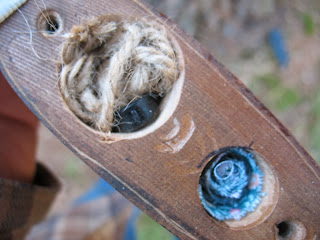Coffee is not really necessary for human survival, but some of us feel like it is. Unfortunately coffee is only grown in tropical regions that are above 3000 feet elevation, so unless you live in one of these regions you will not be growing your own coffee. So storing coffee, or coming up with a substitute, is the only option. The question is how do you store coffee, how long can you store it, and how do you process it?
First of all, coffee does not store well. Moisture and oxygen are the main enemies of
coffee. Once coffee has been roasted it
begins to deteriorate immediately. I am
no coffee expert, but I am told that roasting releases the oils in coffee and
the beans begin to turn rancid when they are exposed to oxygen. If the coffee is ground, this process happens
even faster. Now the question is, what
is bad coffee? I and the coffee
connoisseurs have a little difference of opinion on this. The gourmet will tell you that you might as
well drink mud as to drink coffee made from pre-ground beans. Well, I don’t pay $4.00 a cup for my coffee,
and I have even been known to drink left-over coffee that was made the night
before. So if you are a coffee
connoisseur my opinion is probably not worth much to you, but I have drunk many
a cup of coffee made from ground coffee that came from a can opened three or
four months earlier. It maybe wasn’t the
best quality cup of coffee, but I lived to tell about it.
I will say that if you are going to store coffee long-term,
the order of preference is:
best – whole green coffee beans
next best – vacuum packed roasted whole coffee beans
worst – vacuum sealed roasted ground coffee
You can buy green coffee beans over the inter-net for around
$7.00 US per pound. If you buy green
beans you will need to repack them into smaller storage bags, add oxygen
absorbers and seal the bags in a food grade plastic bucket. Coffee stored this way will keep, I am told,
for two to five years. I have not stored
any coffee for this long, but it sounds reasonable to me.
If you are storing whole roasted or ground coffee, leave it
in the vacuum sealed bags, and let your taste buds be your guide. What one person thinks is awful coffee,
another person may find perfectly good.
If you are storing green coffee beans you will have to roast
and grind the beans before you make a cup of coffee. There is no mystery attached to roasting
coffee beans. Just put the beans in an
iron skillet over medium heat and keep stirring them until they change
color. They will go from yellow-green,
to tan, to brown, and eventually to black.
Just roast them until they are brown or black depending on whether you
like light roast or dark roast coffee.
Don’t be worried if they smoke a little.
When they are the color that you like, let them cool and then blow off
the chaff. You are now ready to grind
the beans.
You can grind coffee beans in your grain mill but this is
kind of a hassle unless you are grinding a lot. I have a small grinder that is perfect for
making a cup or two of coffee at a time so this is what I usually use. If you are using pre-roasted beans you will,
of course, need to grind them also.
I was on a campout one time and a friend of mine named Doyle
said that he would make us a pot of coffee.
He pulled out a bag of green coffee beans and put some beans in a
skillet to roast. Immediately he started
digging through his pack, pulling out socks, and sniffing them. The rest of us wondered what the heck he was
doing. When he found a sock that passed
his smell test, he poured the coffee beans out of the skillet and into the sock. He then placed the sock of coffee beans on a
stump and started smacking it will the hammer end of his hatchet. When the beans were sufficiently crushed he
dumped them into a coffee pot and proceeded to make a very good batch of
coffee. Every campout after that we
always called on Doyle to make us a nice, fresh pot of “toe-jam coffee.”



















